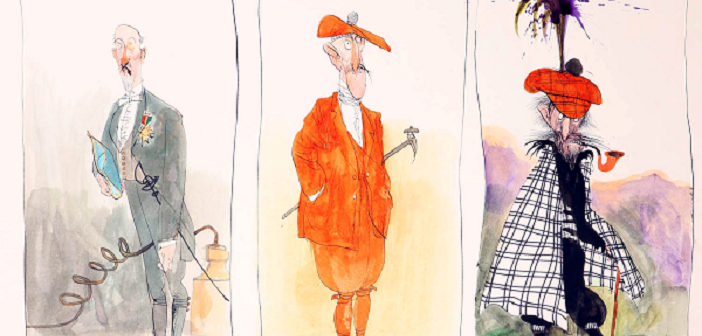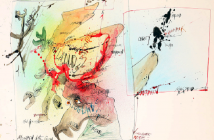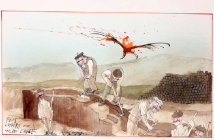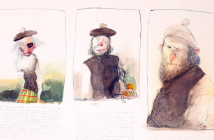| Ian MacDonald I.S.O., late of the Inland Revenue and author of a classic work on whisky,Smuggling in the Highlands (1914), was a severe late-Victorian excise man who wielded a rod of iron in high moral dudgeon across the vast regions north of Inverness. He considered the virulent revival of illicit distilling to strike at the very fibre of social stability, quoting as causes the abolition of the Malt Tax, the diminished powers of the Revenue Preventative Staff and the Crofters Act of 1886. The latter gave the descendants of the dispossessed crofters their land back,, and their houses of which had been built by the crofters themselves. This new security of tenure engendered a vigorous confidence in some kind of future and revived those pernicious habits of by-gone days. A younger generation returned to the old traditions and skills. Peatreek [smoke of burning peat]was rampant again. Officer Ian MacDonald wrote: ‘In their efforts to suppress this fresh outbreak the Revenue officials were much hampered not only the strong popular sentiment in favour of smuggling and smugglers, but also by the mistaken leniency of local magistrates, and by the weak, temporizing policy of the Board of Inland Revenue towards certain sportsmen who claimed exemption for their extensive deer forests from visits by the Inland Revenue Officials.’ | There was never any doubt when Officer Hosie Spittle of Glenshee was back in the Tay Valley region of his boyhood years, for he never passed through Aberfeldy without buying a fresh supply of tweeds from Haggarts, the milliners of that very town. This sartorial snooper would make his discreet enquiries there during his intimate fitting-room struggles, and at Fanny Dullweem’s Cake Bazaar afterwards where he bought his toffees and oatcakes to see him through another fruitless night of surveillance. He never gave up hope of catching sight of the telltale peastsmoke whispers rising above poplars and rowan trees along the river banks before sundown. He came every autumn as the leaves turned to rich orange hues, stabbing the black green conifers like bothy fires. It gladdened his heart. Many times he would swoop but every time he was fooled. Leaf burning would be in full swing and smoke was in the air like Scottish gossip. He only ever caught old Mr. Haggart himself, behind the very shop burning some tweed offcuts from last year’s range, the same as this year’s but last year’s nevertheless. Officer Hosie bought three more suits by way of apology. | Stylish to the point of lunacy, Cyrus Culbokiefrom the Black Isle, North of Inverness who was nicknamed the ‘Wretched White Watch’ on account of his cloak of white menace that could be seen from 20 miles off. Although he crawled on his stomach whilst stalking his prey, his ridiculous purple heather feather plume strutted above him as conspicuously as a pipe band of Sutherland Highlanders. He took up pipe smoking after the manner of a popular new detective hero he had tried to read. He eventually earned the title of the ‘Wretched Burn Watch’ when he accidentally set fire to a thousand square miles of prime grouse moor heather whilst trying to light his pipe in high wind. |
Ralph Steadman’s Whisky Tax Men
Share.




